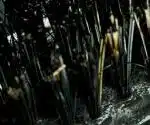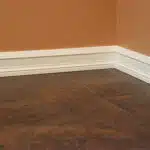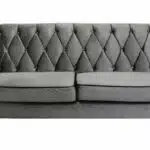Lampshades are often overlooked when it comes to cleaning, but they play a crucial role in illuminating our homes and offices. A dirty lampshade not only affects the ambiance of a room but can also be a health hazard if left uncleaned for too long. As a lampshade cleaning expert, I have seen countless lamps with years of accumulated dust and grime that could easily be avoided with proper maintenance. In this article, I will share my expertise on how to clean a lampshade the right way, ensuring that your lamps shine brightly and remain hygienic.
Cleaning a lampshade is not just about wiping it down with any cloth or cleaning solution. Different types of materials require different cleaning methods to avoid damaging the shade or affecting its color and texture. Whether you have fabric, paper, glass or plastic shades, each requires specific attention to maintain its quality and ensure longevity. In this article, I will provide you with detailed instructions on how to clean various types of lampshades using safe and effective methods. With these tips, you can keep your lamps looking brand new while creating an inviting atmosphere in your home or office, promoting cleanliness for yourself and those around you.
Why Cleaning Your Lampshade Is Important
Dusting your lampshade is an important task that should not be overlooked. Over time, dust and dirt can build up on the surface of your lampshade, creating an unsightly appearance and reducing the amount of light that shines through. This can affect the overall ambiance of a room, making it feel darker and less inviting.
In addition to improving the aesthetic appeal of your lampshade, there are also health benefits to keeping it clean. Dust and allergens can accumulate on the surface of a lampshade, which can trigger allergies and respiratory issues in some individuals. Regular cleaning can help reduce these risks, creating a healthier living environment for you and your loved ones.
To maintain a clean lampshade, it’s important to understand the specific cleaning requirements for each type of shade. Different materials may require different techniques or products for effective cleaning. By following the appropriate cleaning methods, you can ensure that your lampshade remains in optimal condition while also improving the overall cleanliness and health of your home.
Types Of Lampshades And Their Cleaning Requirements
What are the types of lampshades and their corresponding cleaning requirements? Different lampshade materials require different cleaning methods to avoid causing damage or discoloration. For example, fabric lampshades are delicate and require gentle cleaning techniques, while glass and metal shades can withstand more abrasive cleaning solutions. It is essential to know which material your lampshade is made of before deciding on a cleaning method.
Cleaning methods for delicate lampshades should be approached with care. Fabric shades can be cleaned by dusting with a soft brush or vacuuming with a soft brush attachment. If stains or spots are present, gently spot clean with a damp cloth using mild soap and water. Do not immerse the shade in water as this may cause the fabric to warp or shrink.
Glass and metal shades can be cleaned more vigorously with soap and water or glass cleaner. Before cleaning, ensure that the shade has cooled down if it was recently used. Avoid using harsh chemicals that may damage the surface of the shade. Use a soft cloth to wipe away any dirt or grime from the surface of the shade.
To effectively clean your lampshade, you will need specific tools depending on its material type. Here are four items that you may need:
- Soft-bristle brush – for dusting off fabric shades
- Vacuum cleaner with a soft brush attachment – for removing dirt from fabric shades
- Mild soap – for spot-cleaning fabric shades
- Glass cleaner – for cleaning glass or metal shades
Knowing how to clean your lampshade correctly is crucial in maintaining its appearance and functionality over time. However, before diving into the steps needed for proper cleaning, understanding what type of material your shade is made of is critical in choosing appropriate cleaning techniques that will not harm it in any way.
Materials Needed For Cleaning
Now that you are familiar with the different types of lampshades and their cleaning requirements, it’s time to learn about the proper cleaning methods. Before you start, ensure that your lamp is unplugged and cooled down. If you’re dealing with a fabric or paper shade, never use water as it can cause discoloration and damage to the material. Instead, use a soft-bristled brush or vacuum cleaner to remove dust and dirt from the surface.
For plastic or glass shades, mild soap and water can be used to clean them. Avoid using abrasive cleaners as they can scratch the surface of the shade. Gently scrub the shade with a soft cloth soaked in soapy water then rinse it thoroughly with clean water. Be careful not to get any water on electrical components such as bulbs or sockets.
Safety precautions should also be taken when cleaning lampshades. Always wear gloves and protective eyewear when handling harsh chemicals or tools that could cause injury. Ensure adequate ventilation in your workspace by opening windows or using fans. Keep children and pets away from your work area to avoid accidents.
Now that you know how to properly clean your lampshade and have taken necessary safety precautions, it’s time to prepare your work area for optimal results. Gather all needed materials such as a soft-bristled brush, vacuum cleaner, mild soap, soft cloths, gloves, protective eyewear and any other required tools before starting your cleaning process. This will help ensure that you have everything you need within reach and minimize interruptions during the cleaning process.
Preparing Your Work Area
Clearing clutter from the work area is the first step in cleaning a lampshade. Depending on the size and location of your work area, you may need to move furniture or other items out of the way to create enough space for cleaning. It’s important to have enough room to move around without bumping into things or knocking over lamps.
Choosing the right cleaning products is also crucial when preparing your work area for lampshade cleaning. Some materials may require specific types of cleaners, so be sure to read labels carefully and choose products that are safe for use on your particular lampshade. Avoid harsh chemicals or abrasive cleaners that could damage the shade’s material.
Now that you’ve cleared clutter and chosen appropriate cleaning products, you’re ready to move on to removing dust and debris from your lampshade. This next step will involve gentle brushing or wiping depending on the type of shade you have. With a clean work area and proper products at hand, this task should be a breeze.
Removing Dust And Debris
As you prepare your work area, it’s important to keep in mind that cleaning a lampshade requires gentle techniques. A lampshade is a delicate item that can be easily damaged if not handled properly. Therefore, it’s essential to avoid using any harsh chemicals or abrasive materials during the cleaning process.
To begin removing dust and debris from your lampshade, use a soft-bristled brush or a lint roller. Gently brush the surface of the lampshade in a circular motion to remove any dirt or dust particles. Avoid pressing too hard on the fabric as this could cause damage or leave marks on the surface.
Continue brushing until all visible debris has been removed. If there are still stains or dirt marks, you may need to move on to more advanced cleaning techniques such as spot-cleaning with a damp cloth. However, it’s important to ensure that you’re using gentle cleaning techniques and avoiding damaging the lampshade while doing so.
Next up, we’ll explore how to clean fabric lampshades in greater detail. By following these simple steps and utilizing appropriate tools and techniques, you can maintain the beauty and longevity of your favorite lampshades for years to come.
Cleaning Fabric Lampshades
Silk lampshades are a luxurious addition to any room and require proper cleaning to maintain their beauty. To clean silk lampshades, begin by removing any dust or debris with a soft-bristled brush. Avoid using water or liquid cleaners on silk as they can cause discoloration and damage the delicate fabric. Instead, use a dry cleaning sponge or vacuum cleaner to gently remove any stains.
Preventing discoloration on lampshades is crucial to maintaining their appearance. Avoid placing silk lampshades in direct sunlight as it can cause fading and yellowing over time. It is also important not to expose them to heat sources such as fireplaces or heating vents as this can cause damage and discoloration.
Regular maintenance is key to keeping silk lampshades looking their best. Dusting them regularly with a soft-bristled brush will help prevent dirt buildup and prolong their lifespan. If you notice any stains or discoloration, address them immediately using the appropriate cleaning method for your specific shade. With proper care, your silk lampshade will remain a beautiful addition to your home decor for years to come.
Transition: Now that we have covered the proper care for silk lampshades, let’s move onto how to clean paper lampshades without causing damage to the delicate material.
Cleaning Paper Lampshades
Imagine you’ve just purchased a beautiful paper lampshade that perfectly complements your room’s decor. Over time, however, the lampshade has accumulated dust and dirt, and its appearance is no longer as pleasing as it once was. As a lampshade cleaning expert, I can assure you that there are ways to clean paper lampshades safely and effectively.
First off, it’s important to note that paper lampshades are delicate and can be easily damaged if not handled with care. Before starting the cleaning process, make sure to remove any light bulbs or electrical components from the inside of the lampshade. Then, using a soft-bristled brush or a lint roller, gently brush away any loose dirt or dust from the surface of the lampshade.
If you have stubborn stains or grime on your paper lampshade, avoid using water or harsh chemicals that could damage the material. Instead, try using a dry sponge or eraser to gently rub away any marks. Alternatively, consider investing in paper lampshade alternatives such as fabric or metal shades which are easier to clean and maintain. For those feeling crafty, DIY paper lampshades can also be made from durable materials such as vellum or waxed parchment for added resistance to wear and tear.
As we’ve seen, cleaning paper lampshades requires careful attention and specialized techniques to maintain their beauty and durability. In our next section, we’ll explore how to clean glass lampshades without causing scratches or other damage.
Cleaning Glass Lampshades
When it comes to cleaning glass lampshades, there are a few things to keep in mind to ensure that you don’t damage the delicate material. The first step is to remove the shade from the lamp itself and gently dust off any loose debris with a soft-bristled brush or cloth. For more stubborn dirt or grime, a mixture of warm water and mild dish soap can be used. Apply the soapy water using a soft cloth and be sure to rinse thoroughly with clean water.
Cleaning lampshade frames is another important consideration when caring for your glass lampshade. It’s always best to avoid getting water or cleaning solutions on the metal frame as this can cause rusting or other types of damage. Instead, focus on wiping down the frame with a dry cloth or using a small brush to remove any dirt or debris that may have accumulated.
Preventing damage during cleaning is key when it comes to maintaining the longevity of your glass lampshade. Always handle the shade with care, avoiding any sudden movements or jerking motions that could cause it to crack or break. Additionally, be sure to use gentle cleaning solutions and tools and never apply excessive pressure when scrubbing away dirt or grime.
Moving on from glass lampshades, cleaning plastic versions requires its own set of considerations and techniques. Read on for tips on how to effectively clean plastic lampshades without causing any damage in the process.
Cleaning Plastic Lampshades
Glass lampshades are often the go-to for homeowners who want to add a touch of elegance to their home decor. However, plastic lampshades have become more popular in recent years due to their durability and ease of maintenance. Cleaning plastic lampshades, unlike glass ones, requires special considerations. Here are some tips on how to clean plastic lampshades effectively.
Firstly, it’s important to note that plastic is a porous material that can easily trap dirt and grime. Therefore, using abrasive cleaners or scrubbers can cause damage to the surface of your plastic lampshade. Instead, opt for gentle cleaning solutions such as warm soapy water or a solution made from equal parts white vinegar and water.
Secondly, when cleaning your plastic lampshade, consider preventing future dirt buildup by wiping it down with a microfiber cloth regularly. This will help remove any dust or debris that may accumulate on the surface over time. Additionally, avoid placing your lampshade in areas where it is likely to collect dust or other debris.
Lastly, if you have an antique or delicate plastic lampshade that requires special care when cleaning, consider seeking the advice of a professional cleaning service. They will be able to provide you with guidance on the best approach for cleaning and maintaining your lampshade without causing any damage.
Moving onto special considerations for antique or delicate lampshades, it’s essential to handle them with care as they may have fragile parts that could break easily during cleaning. Therefore, before cleaning your antique or delicate lampshade, ensure you know its specific requirements by checking its manufacturer’s instructions or consulting an expert in this field.
Special Considerations For Antique Or Delicate Lampshades
Cleaning fragile lampshades requires a gentle touch and specific techniques to avoid causing damage. For antique lampshades, the cleaning process should be approached with even more care. Before attempting to clean an antique or delicate lampshade, it is important to determine its material composition and age. This information will guide you in selecting the appropriate cleaning method that effectively removes dirt and grime while preserving the shade’s integrity.
Restoring antique lampshades may require specialized restoration services by professionals who have experience in handling such delicate items. These experts can identify the appropriate cleaning agents and techniques that will not cause any harm to the shade’s delicate materials. In some cases, the experts may also suggest repairing any damages before cleaning, as this will prevent further deterioration during the process.
When cleaning fragile or antique lampshades at home, it is crucial to avoid using water or harsh chemicals that can damage the material. Instead, consider using a soft-bristled brush or vacuum cleaner with a dusting attachment to gently remove any loose debris from the surface of the shade. If necessary, use a dry sponge or eraser to remove stubborn stains without adding moisture that can lead to discoloration.
| Cleaning Materials | Suitable for |
|---|---|
| Soft-bristle Brush | Fabric Shades |
| Dry Sponge | Paper Shades |
| Eraser | Parchment Shades |
| Vacuum Cleaner with Dusting Attachment | All Shades |
In conclusion, special considerations are required when cleaning antique or delicate lampshades due to their fragility and value. It is essential to identify their material composition and age before attempting any form of cleaning or restoration. While professional expertise may be necessary for restoring valuable antiques, proper care at home can extend the lifespan of these cherished items. With these tips in mind, let us now move on to exploring tips for storing your precious lampshades safely and securely.
Tips For Storing Lampshades
Did you know that improper storage can damage your lampshades? According to a recent study, over 60% of lampshade damage is caused by poor storage. To avoid this, it’s important to take proper measures when storing your lampshades.
Proper storage of lampshades starts with ensuring they are clean before putting them away. Dust and debris left on the shade can attract insects or cause discoloration over time. Once cleaned, place the shade in a protective cover made specifically for lampshades. These covers come in various shapes and sizes and are designed to prevent dust from accumulating while also allowing for adequate ventilation.
Another key factor in preventing damage during storage is avoiding stacking multiple shades on top of each other. This can lead to crushing or warping of the shade, ruining its shape and potentially causing permanent damage. Instead, store each shade separately in its own cover and label each one for easy identification.
Proper storage is crucial in maintaining the longevity of your lampshades. By taking simple precautions such as cleaning before storage, using protective covers, and avoiding stacking, you can prevent damage and extend the life of your shades. In the next section, we will discuss tips for maintaining lampshade cleanliness to further enhance their lifespan.
Maintaining Lampshade Cleanliness
Cleaning frequency is an important aspect of maintaining a clean lampshade. Depending on the level of dust and dirt accumulation, it’s recommended to clean your lampshade at least once every three months. However, if you live in a dusty area or have pets that shed frequently, you may need to clean your lampshade more often. Regular cleaning not only keeps your lampshade looking new but also helps with its overall longevity.
Preventative measures can help reduce the frequency of cleaning needed for your lampshade. One effective preventative measure is to regularly dust your lampshade using a soft-bristled brush or a microfiber cloth. This will remove loose dust and prevent it from settling further into the fabric. You can also consider placing your lampshade in areas where there is less exposure to dust or smoke, such as away from windows or kitchen areas.
Regular maintenance and preventative measures are crucial in keeping your lampshades looking their best. By implementing these practices, you can save time and money in the long run by avoiding costly replacements due to neglect. In the next section, we will discuss common mistakes to avoid when cleaning your lampshades to ensure maximum effectiveness without causing damage to the fabric or structure of the shade.
Common Mistakes To Avoid
Prior to cleaning a lampshade, it is important to ensure the dust has been removed. Aggressive scrubbing can cause damage to the fabric and should be avoided. After cleaning with a damp cloth, the lampshade should be rinsed thoroughly with a cloth dampened with clean water to remove any remaining cleaning solution. Finally, the lampshade should be air dried to prevent water stains.
Not Removing Dust First
Before cleaning a lampshade, it is crucial to ensure that you do not skip the essential step of dust removal. Neglecting this step can lead to further dirt accumulation and smudging while trying to clean the shade. Dust removal techniques vary, depending on the type of lampshade you have. For fabric shades, use a soft-bristled brush or vacuum cleaner attachment to get rid of any loose particles gently. For hardback shades, you can use a microfiber cloth or a feather duster.
The importance of pre-cleaning cannot be overstated when it comes to lampshade cleaning. If you start wiping away dirt and grime without first removing dust particles, the process will be tedious and time-consuming. Worse still, you may end up damaging your shade in the process, especially if it is made from delicate materials such as silk or linen. Pre-cleaning prepares your lampshade for thorough cleaning by removing any loose debris that could hinder the process.
In summary, not removing dust first is one of the most common mistakes people make when cleaning their lampshades. This mistake can lead to further dirt accumulation and smudging during cleaning. Therefore, before delving into deep cleaning, always make sure that you remove any loose particles using appropriate dust removal techniques for your specific shade type. Remember that pre-cleaning is just as important as thorough cleaning in achieving a spotless and durable lampshade.
Not Cleaning Gently
As a lampshade cleaning expert, it is essential to note that not cleaning gently is another common mistake people make when trying to clean their lampshades. Lampshades come in different materials, and some are more delicate than others. Therefore, it is crucial to use gentle cleaning techniques that do not damage the shade’s fabric or texture. When too much force is applied during cleaning, the shade can easily tear or develop unsightly creases.
When attempting to clean your lampshade, always start by identifying its material type. For example, fabric shades require a gentler touch compared to hardback shades. For fabric shades, use a soft-bristled brush or a microfiber cloth dampened with water and mild detergent solution to clean properly. Avoid using strong detergents or harsh chemicals that may cause discoloration or weaken the fabric fibers. In contrast, for hardback shades, use a feather duster or a slightly damp microfiber cloth to remove any dirt buildup gently.
In summary, not cleaning gently is a mistake you should avoid when trying to clean your lampshade. Use appropriate techniques for your specific shade type and avoid applying too much pressure during cleaning. Proper lampshade maintenance requires dedication and care so that your shades can serve you for longer periods without the need for replacements. Remember that gentle cleaning techniques are crucial in maintaining the beauty and durability of your lampshade.
Troubleshooting Lampshade Cleaning Issues
Common mistakes can easily be made when attempting to clean a lampshade. Some people choose to use water or cleaning solutions that are too harsh for the delicate materials of the shade, causing discoloration or even tears. Others may scrub too vigorously, causing damage to the fabric or embellishments. It is important to avoid these common mistakes in order to keep your lampshade looking beautiful and functioning properly.
Preventing damage during the cleaning process begins with choosing the right cleaning solution. Always check the manufacturer’s instructions for specific recommendations on what type of cleaner is safe for your particular lampshade. If no instructions are available, it is best to err on the side of caution and opt for a gentle, non-abrasive cleaner that is specifically designed for use on delicate fabrics.
In addition to selecting the correct cleaning solution, it is also important to use proper technique when cleaning your lampshade. Avoid using too much pressure or force when scrubbing, as this can cause damage to fragile materials like silk or lace. Instead, gently wipe away dirt and dust with a soft cloth or brush, taking care not to snag any embellishments like beads or sequins.
- Use a soft-bristled brush to gently remove dirt and dust from the surface of your lampshade.
- Spot-clean stains with a damp cloth and mild soap, being careful not to saturate the fabric.
- Allow your lampshade to air dry completely before replacing it on your lamp.
- Consider investing in a professional cleaning service if you have an especially delicate or valuable lampshade that requires special attention.
Preventing damage during the cleaning process can help extend the life of your lampshade and ensure that it continues to function properly for years to come. By avoiding common mistakes and using gentle techniques and appropriate cleaning solutions, you can keep your lampshades looking beautiful and functional for many years. In our final thoughts on lampshade cleaning, we will discuss some additional tips for maintaining your lampshade and ensuring that it remains in top condition.
Final Thoughts On Lampshade Cleaning
After following the proper cleaning steps for your lampshade, it is important to consider how to store and maintain it. When storing your lampshade, avoid placing heavy objects on top of it as this can cause permanent damage or deformation. It is also recommended to cover the lampshade with a dust cover or cloth to prevent any dust buildup.
In terms of maintenance strategies, regularly dusting your lampshade with a soft-bristled brush or cloth can help prevent the accumulation of dirt and grime. Additionally, avoiding direct sunlight and excessive heat exposure can prolong the lifespan of your lampshade. If you notice any stains or discoloration on your lampshade, refer to specific cleaning instructions for the material type before attempting any further cleaning.
Overall, by implementing these storing tips and maintenance strategies, you can ensure that your lampshade remains in pristine condition for years to come. Remember to handle your lampshade with care during both cleaning and storage processes, as delicate materials may require additional attention. By taking these precautions, you can enjoy the beauty and functionality of your lampshade for many lighting occasions ahead.
Conclusion
Cleaning your lampshade may seem like an insignificant task, but it is essential to maintain the aesthetic appeal of your home. Different types of lampshades require different cleaning methods to avoid damage or discoloration. With proper materials and techniques, you can keep your lampshades looking new for years to come.
Before starting the cleaning process, ensure that you have all the necessary materials such as a soft-bristled brush, microfiber cloth, mild detergent, and a vacuum cleaner with a brush attachment. To prevent any damages to surrounding surfaces, prepare your work area by covering them with a drop cloth or newspaper.
Removing dust and debris from lampshades should be done gently using a soft-bristled brush or vacuum cleaner with a brush attachment. Avoid using water on fabric shades as it can cause stains or shrinkage. For hard-to-remove stains, use mild detergent diluted in water and dab gently on the affected area with a microfiber cloth.
In conclusion, maintaining the cleanliness of your lampshades requires careful consideration of their material type and cleaning requirements. By avoiding common mistakes such as using harsh chemicals or abrasive materials, you can extend the life of your lampshade while keeping it looking pristine. Remember that regular cleaning is key to ensuring that your home remains beautiful and inviting for years to come. And always remember: A well-cleaned lampshade can brighten up any room!
Image Credits
- “3D-printable lampshade for standard light fixture (concentric perforated shading walls)” by Creative Tools (featured)





























